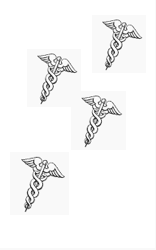


By VINCE KURAITIS, ERIC PERAKSLIS, and DEVEN McGRAW
This piece is part of the series “The Health Data Goldilocks Dilemma: Sharing? Privacy? Both?” which explores whether it’s possible to advance interoperability while maintaining privacy. Check out other pieces in the series here.
A worldwide dialog about COVID-19 contact tracing is underway. Even under the best of circumstances, the contact tracing process can be difficult, time-consuming, labor-intensive, and invasive — requiring rigorous, methodical execution and follow-up.
COVID-19 throws curve balls at the already difficult process of contact tracing. In this post we will provide some basic background on contact tracing and will list and describe 10 challenges that make contact tracing of COVID-19 exceptionally difficult. The 10 unique challenges are:
1) COVID-19 is Highly Contagious and Deadly
2) Contact Tracing is Becoming Politicized
3) We Lack Scientific Understanding of COVID-19
4) Presymptomatic Patients Can Spread COVID-19
5) Asymptomatic Patients Can Spread COVID-19
6) Contact Tracing is Dependent on Availability of Testing
7) Contact Tracing is Dependent on New, Extensive Funding
8) Contact Tracing is Dependent on an “Army of Tracers” and Massive Support for Patients
9 ) The Role of Technology is Unclear — Is it Critical Support or a Distraction?
10) The U.S. Response Has Been Fragmented and Inconsistent
The thrust of this post is about traditional boots-on-the-ground contact tracing conducted by public health agencies. We will touch on a few aspects of digital contact tracing (e.g., smartphone apps), but we’ll go into much more depth on digital contact tracing in future posts.
How does contact tracing relate to the theme of this series — The Health Data Goldilocks Dilemma? It’s about obtaining the right amount and types of information — not too much, not too little. Not too much data so that privacy rights or civil liberties are infringed, or that contact tracers are overwhelmed with useless data; not too little data so that public health agencies aren’t handcuffed in protecting our safety in tracing COVID-19 cases.
Continue reading…












